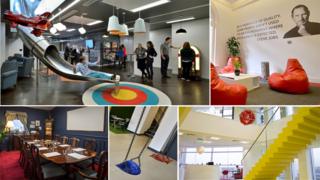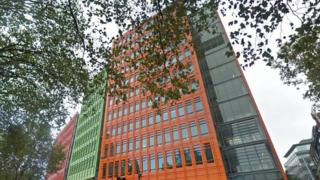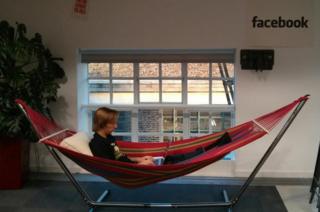Expensively packaged tablets loudly promise rapid relief or claim to work for particular types of pain. But whats the scientific evidence that theyre any better than their cut-price rivals?

Like most people, I am not good with pain. So when period pains are setting in, I reach for the painkillers. I bypass the branded ones stacked at eye level on supermarket shelves, in fancy packaging with multicoloured, eye-catching logos. Instead, I buy plain-looking packs of generic painkillers. To select the analgesia I want, I look for the active ingredients printed on the box, not the promises.
But it is no wonder that there is confusion. The range of over-the-counter medicines is huge and can be overwhelming, especially if you have a sore head and are feeling vulnerable. The product that shouts loudest, stating it will take away all your pain, is tempting.
There are legitimate reasons why brand-leader medicines cost more. The pharmaceutical companies that produce them will have conducted the initial multi-million-pound drug research and trials essential for product safety. The more modestly priced generic medications are made by companies creating cheaper versions once the patents set by brand-leaders have expired. So are the more expensive drugs more effective than their cheaper, generic versions?
The BBC2 series Trust Me Im a Doctor turned to science to try to find out. Different types of painkillers, all containing ibuprofen, were selected, and scientists from the pharmaceutics laboratory at University College London devised a series of experiments. The first compared two well-known branded ibuprofen-containing products in the higher price category against three generic products. First, they looked at whether the products contained as much ibuprofen as was claimed on the box. In the UK, all licensed medications are tightly controlled by the Medicines and Healthcare Products Regulatory Authority (MHRA); reassuringly, each product contained ibuprofen at the right amount.
The second set of tests tried to find out how quickly the drug was released from the tablets the dissolution test simulating how quickly the ibuprofen gets into a form which can get into our bloodstream. The results were revealing. When the tablets were added to solution, most of the products across the range started to release their drug almost immediately. The British Pharmocopeia guidelines say that in order to sell a product on the market, a minimum percentage of active ingredient has to be released within a particular time. For ibuprofen tablets, this means that 75% of the drug has to be in solution within 45 minutes. Different products release drugs at different rates, but they all need to meet that minimum cut-off standard.
Simon Gaisford, head of the pharmaceutics department at UCL, explains: If Im a company and I want to develop a generic version of a product, I have to demonstrate to the MHRA that my product is bio-equivalent to the brand leader. That means a new generic product has to reach the bloodstream at the same time as the brand leader. In this case, all the products tested did, regardless of price. The results did show variability in the release rates, but both the generic and branded products released the majority of the ibuprofen within 45 minutes. There was no significant difference between the different manufacturers products.
It would seem, therefore, there is no advantage in paying for more expensive tablets containing the active painkilling drug you want to use the cheaper ones are just as good.
But how many times have we heard products claiming to kill pain fast? Does paying more mean killing pain faster? These claims are also regulated by law in the UK. According to MHRA guidelines, in order to justify the claim of fast-acting, a drug has to have its onset of action taking place less than 30 minutes after oral administration. Two forms of fastacting ibuprofen products one branded and one generic were tested, and more than 75% of both drugs were in solution within 20 minutes as opposed to 45 minutes for the standard products. Yet again, while both acted more quickly that the standard versions, theres no advantage in paying more the cheap, generic express products worked just as quickly as the expensive brands.
Another marketing ploy is to specify a particular pain. Some of the big-selling brands, such as Nurofen, package ibuprofen into different products targeted at various types of pain. It might suggest theres something different in each box. In a statement to the BBC, Nurofens maker, Reckitt Benckiser, stated: Pain-specific products provide easy navigation of pain relief and consumer research indicates that seven in 10 people say these packs help them decide which product is best for their needs.
Ibuprofen doesnt target just one area of pain, however, but works by dampening pain no matter where it is in the body. Thats true of any ibuprofen product, regardless of price. Its also true of any painkilling drug you can buy over the counter, such as paracetamol. In 2015, an Australian court found that Reckitt Benckiser had misled the public by marketing four Nurofen products that claimed to target specific types of pain back pain, period pain and headaches when, in fact, it was exactly the same medicine in each box. The company states that any Nurofen products that have the same active ingredient, pack-size, format and formulation have the same manufacturers recommended retail price. This year, though, the Advertising Standards Authority took Nurofen to task over one of the brands pain specific adverts.
But Nurofen isnt the only product marketing pain-specific ibuprofen. At the end of the day, the best guard against paying more is the knowledge that, under UK law, consumers are protected and can safely buy the cheapest versions on offer. If, however, you need to get on with your day free of pain, and you dont have the patience to wait, then you can pay more for the express version. But the generic fast-acting forms will do it just as effectively as the expensive brands in their fancy packaging.
Read more: https://www.theguardian.com/science/2016/oct/03/do-branded-painkillers-work-better-than-cheaper-generic-ones-iboprofen-nurofen




























